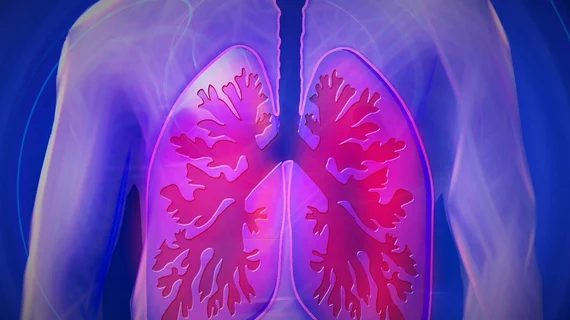AI determines difference between lung cancers with 97% accuracy
Using artificial intelligence, researchers at the NYU School of Medicine can correctly distinguish between two different types of lung tumors—adenocarcinoma and squamous cell carcinoma—with 97 percent accuracy, according to findings in Nature Medicine.
Led by Aristotelis Tsirigos, PhD, an associate professor at NYU School of Medicine, the researchers said their algorithms were able to determine if six different genes (STK11, EGFR, FAT1, SETBP1, KRAS and TP53), which are traditionally linked to lung cancer, were present in patients’ cells. Accuracy was dependent upon the gene, ranging from 73 to 86 percent.
“Such genetic changes or mutations often cause the abnormal growth seen in cancer, but can also change a cell’s shape and interactions with its surroundings, providing visual clues for automated analysis,” stated a prepared statement issued by the university.
The researchers trained a deep convolution neural network with images from a database of cancer diagnoses that were already determined. Almost half the small percentage of tumor images misclassified by the algorithm were also misread by pathologists, further indicating how difficult it is to distinguish between adenocarcinoma and squamous cell carcinoma.
However, the researchers noted, 45 of 54 of the images misclassified by at least one of the pathologists were assigned correctly by the AI algorithms.
“In our study, we were excited to improve on pathologist-level accuracies, and to show that AI can discover previously unknown patterns in the visible features of cancer cells and the tissues around them,” said co-author author Narges Razavian, PhD, assistant professor at NYU School of Medicine. “The synergy between data and computational power is creating unprecedented opportunities to improve both the practice and the science of medicine.”
Determinations of which genes are changed in each tumor are vital due to increased use of targeted therapies that work against cancer cells with specific genetic mutations. For example, 20 percent of patients with adenocarcinoma have mutations in the gene EGFR, which can be treated with drug therapies.
Still, determining which genes have mutations can take time, and the researchers hope their algorithms can help avoid delays in treatment.
“Our study provides strong evidence that an AI approach will be able to instantly determine cancer subtype and mutational profile to get patients started on targeted therapies sooner,” Tsirigos said.

